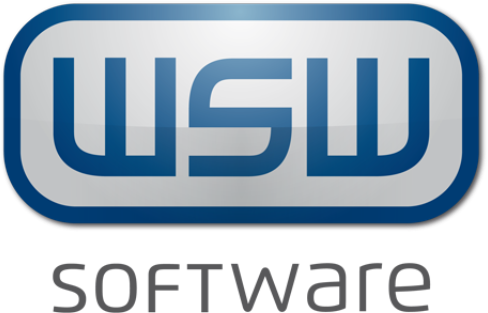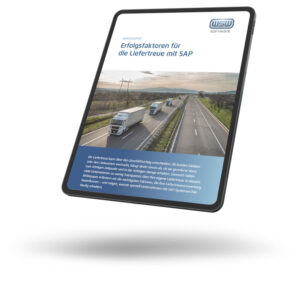- Products & Solutions
- Services
- ConsultingMenüServicesMenü
- Processes
- Data reception & processing
- Preparation
- Shipping
- Customs & Foreign Trade
- SAP Data management
- Production & Warehouse
- Monitoring & Analysis
Data reception & processingPreparationShippingCustoms & Foreign TradeSAP Data managementProduction & WarehouseMonitoring & Analysis
- Company
- CompanyMenüCompanyMenü
- Career
- Events
Software for JIS processes
The five most important solutions in comparison

Just in Sequence (JIS) is one of the most challenging forms of delivery. These requirements can only be met smoothly if the processes are supported by a software solution. Here we present the most important options and evaluate the advantages and disadvantages.
Table of contents
JIS is a delivery approach in which goods, products or materials are delivered to the customer in the correct sequence. In contrast to just-in-time, which is based on the right quantity at the right time, there is an additional requirement here. JIS delivery is very often encountered in the automotive industry, because here the deliveries are requested to match the tight cycle of automobile production.
1. Why do i need software for Just in Sequence?
Logistics processes in many companies are still not very digitized, at least not completely. Often, a delivery is put together with the help of a printed list. Or goods have to be entered manually into a system in order to assemble them into a delivery.
For some companies, this is also sufficient for the time being. However, not if sequential delivery is required. Here, digitization becomes necessary for several reasons:
- Just in Sequence requires high accuracy and does not tolerate errors.
- The pressure from customers is often great: in the event of errors, another supplier is chosen or the price is lowered.
- The automotive industry is very price-sensitive. Hardly any supplier can afford waste (also in terms of unnecessarily complex processes).
- Automobile manufacturers rely on electronic data exchange throughout the entire process - i.e. from order entry or call-off to delivery with the associated delivery bills (in electronic or printed form) - for this reason alone, suppliers need software solutions that can map this.
- JIS processes are time-sensitive: call-off time and delivery are close together. Reaction and processing must be very fast.
There are also alternatives that can make sense for companies. Hiring an external service provider can relieve the burden. These can either take over the supply or directly the entire logistics including warehousing.
However, anyone who wants to map the JIS processes themselves is dependent on digital support. There are various solutions for this. The advantages and disadvantages of these alternatives cannot be applied across the board in every situation. It depends heavily on the functions of the specific software solution, the requirements of the customers to be supplied, the number of customers and also the existing systems.
2. What software solutions are available? SAP vs. non-SAP
The existing solutions can be divided into two major groups, depending on whether you use SAP solutions for your JIS processes or not. However, the comparison between these two different strategies is not as trivial as it seems at first glance: There are many companies that use SAP solutions but map their JIS processes with non-SAP solutions.
You also have to take into account the purposes for which you want to use a software. JIS processes are very sensitive, which is why some companies protect themselves with an emergency alternative. They then handle their JIS processes via SAP, for example, but have a second software in use as an emergency solution in case there are failures or planned downtimes.
This means that even if you use SAP systems, this does not automatically mean that you also have to map JIS processes using SAP solutions. And vice versa, you may not be using SAP systems today. But if this is planned for the future, it may make sense to start thinking about mapping JIS processes with SAP solutions or enhancements now.
3. JIS software in comparison: The most important advantages and disadvantages
3.1 Use existing systems: SAP
SAP systems are market leaders in the ERP environment. SAP offers its own modules for JIS processes, SAP JIT and New Generation JIT.
- No additional system implementation (provided SAP is already in use)
- Full integration: All data in one system, no system and media discontinuities, no interface changes
- In addition to ERP and logistics functionalities, also modules for other application areas
- SAP expertise probably already exists in your IT department
- Large network of SAP users, SAP consultants and SAP partners available
- Only very basic JIS functions available
- Set-up effort for new processes sometimes very high, even with implemented systems
- Many requirements not in the SAP standard (for example, the processing of additional information when a call is received)
For whom is SAP for JIS processes suitable?
Using SAP solutions for JIS processes is particularly suitable if you pursue an exclusive SAP strategy in your IT and if JIS processes are not of central economic importance to you.
3.2 Extending Existing Systems: SAP Extensions as In-house Development
SAP systems basically have to be configured, and customizing is often necessary. Most companies therefore have basic SAP expertise available in their IT department. If your team is large enough, functional enhancements can also be programmed in-house.
- Everything in your own hands: flexibility in the design of processes
- No external partner (cost savings)
- Resources and capacity needed in the development team (usually little flexibility)
- Quality of the development depends on the know-how in your company
- Know-how about in-house development distributed among a few specialists - longevity of the solution can become a problem if documentation is careless
- Best possible process implementation may not be top priority of developers
When you should develop your own SAP enhancements
Actually, in-house development has great advantages. However, it is only recommended if you have both extensive SAP expertise and in-depth process knowledge available in your company, and these different areas can communicate and work well together.
3.3 Extending Existing Systems: Add-ons for SAP Systems
Since JIS requirements have to be implemented at so many companies, there are ready-made add-ons for SAP systems that are designed to support precisely these processes.
- Full integration into the ERP system: All data in one system, no system and media discontinuities, no interface changes
- Easy customizing in familiar environment
- OEM requirements mostly configurable
- Z developments in your standard SAP
- Implementation of changes only with external support
SAP-based add-ons are the best solution for you
Do you want to deploy SAP systems, but don't have the resources or expertise to do so for numerous JIS requirements? Then your best bet is to start looking for a provider of SAP extensions for JIS processes.
3.4 In-house development from scratch
For most companies, developing their own solution is not an option because the effort required during development and later during operation is disproportionately high. For the sake of completeness, however, we list it here:
- Full flexibility in implementation and process design
- No external partner and no additional costs
- Expertise and resources rarely available
- Quality of the development depends on the know-how in your company
- Comprehensive project with time investment
- May be difficult to scale or expand
- Possible data duplication and no integration into ERP
You should rely on an in-house development
You have no restrictions due to an existing system landscape, want to be as flexible as possible in the implementation and have an IT department that is set up for such projects.
3.5 Third-party solution
Third-party solutions are ready-made solutions developed specifically for JIS processes. When selecting such a system, the most important factor is how well it integrates with your existing systems. The extent to which you benefit from the software is largely dependent on this.
- Process, industry and technology know-how available at the supplier's site
- Flexibility in resources
- Various functionalities already implemented
- No integration into ERP
- Possible data duplication and interface change
This is where you benefit most from third-party solutions
In your company, stable and smooth processes take priority over vendor lock-in? Then it's best not to dwell on solutions that have not been developed specifically for your process requirements.
4. What you should consider when comparing!
As is usual in IT projects, price or vendor comparisons are not the primary consideration when selecting the right software. More important are your starting position and your goals. Before you compare software solutions, it's also best to take a look at existing processes. Is there a need to catch up here before you digitize?
The more you know about your systems and requirements, the better you will be able to scrutinize possible solutions and providers. It is best to include different areas of the company in this review. In addition to IT and logistics, supply chain management, purchasing, sales, shipping and production are also affected by JIS software.
5. Conclusion: proven standard solutions pay off fastest
All of the solutions described have advantages and disadvantages. The two options that probably perform best for most companies are those that work in the long term while requiring little effort: Add-ons to the existing ERP system or a third-party solution.
Both variants are usually already testedso you don't have to reinvent the world. If a provider has a lot of experience with JIS processes, he can even advise you on how to carry out the processes as well as possible.
A Standard solution also offers the advantage that it usually has all the necessary interfaces and your existing systems do not need to be adapted. Such solutions are usually very stable and not prone to problems.
However, the greatest advantage probably lies in the short implementation time: No need to develop here, so you can quickly use the functions you need.
Home / WSW Knowledge


